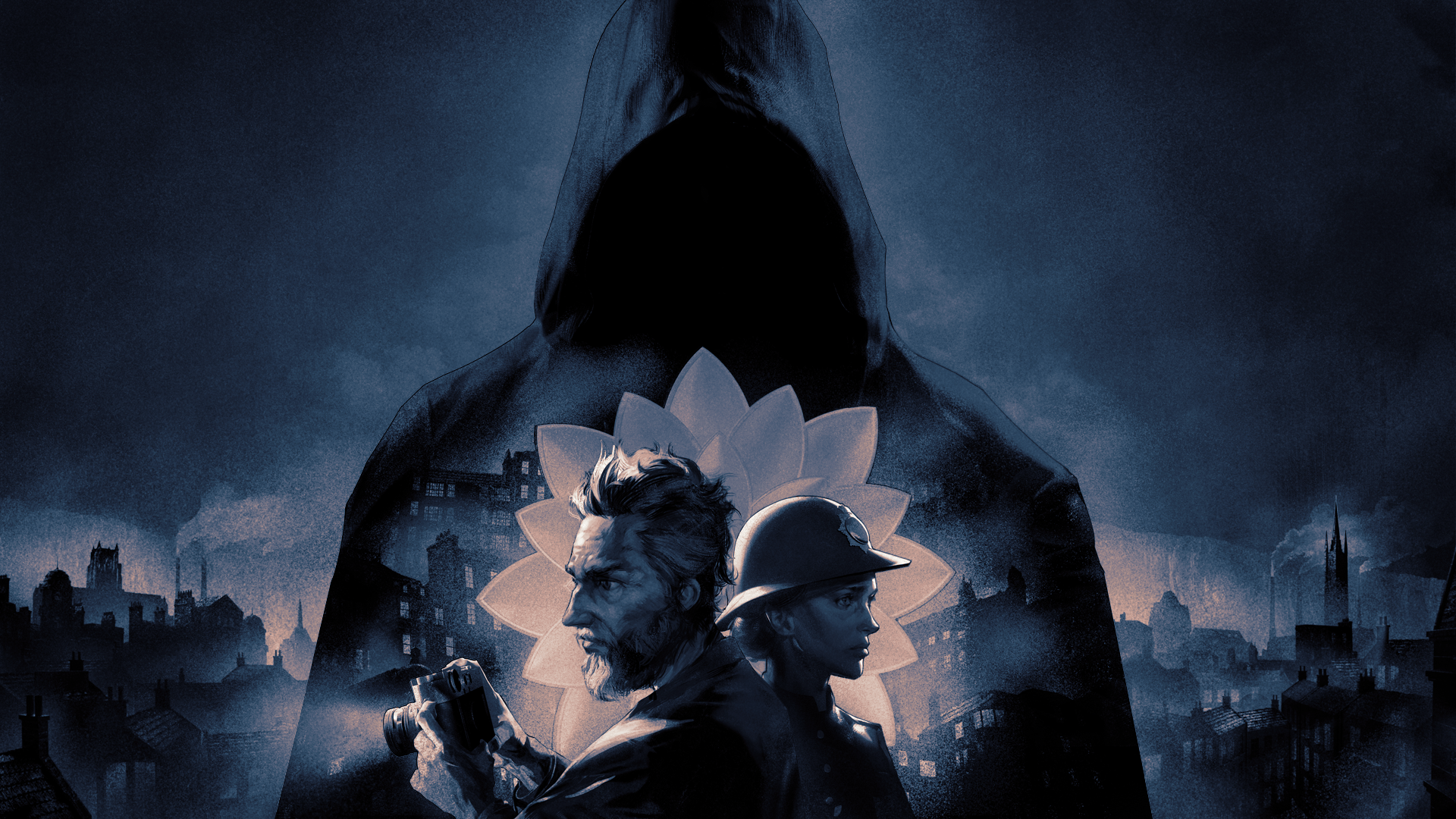Conway: Disappearance at Dahlia View kicks off with subdued dramatics as young girl Charlotte May is kidnapped from her family home on Dahlia View just before midnight. The perpetrator stalks the streets as the title cards roll in and the unsuspecting residence wake to their new, far less idyllic reality. You are the last to stir from slumber, an aging, former private detective who has begrudgingly settled into a humdrum existence but maintains a watchful eye over his little slice of London. Like most good detectives, the allure of a good mystery proves too much for Robert Conway as he somewhat reluctantly comes out of retirement to find the missing girl and put things right in his home.
Conway: Disappearance at Dahlia View plays out in siloed investigation sequences, typically following a pattern of Conway observing his neighbours through a camera before breaking into their houses to investigate and finally returning home to build out his clues board. Red string and all, old mate goes all-in on this one. The observation stretches are teeming with potential but rarely see you do much more than watch rigid, humorously convenient cutscenes play out. Conway sits by his rear windows and uses a camera to zoom in and out, taking photographs of suspicious activity and evidence. This would feel infinitely more gratifying and tense if the game would let events play out in an organic manner, but as it is you’re essentially strapped in for a pantomime of ‘the neighbours sure are acting weird’ greatest hits. However, if a dude watching his neighbours through a camera sounds a bit creepy to you, it’s only because it is, and Conway’s blunt and unlikeable personality didn’t make me feel any better about the morally ambiguous intrusions either.
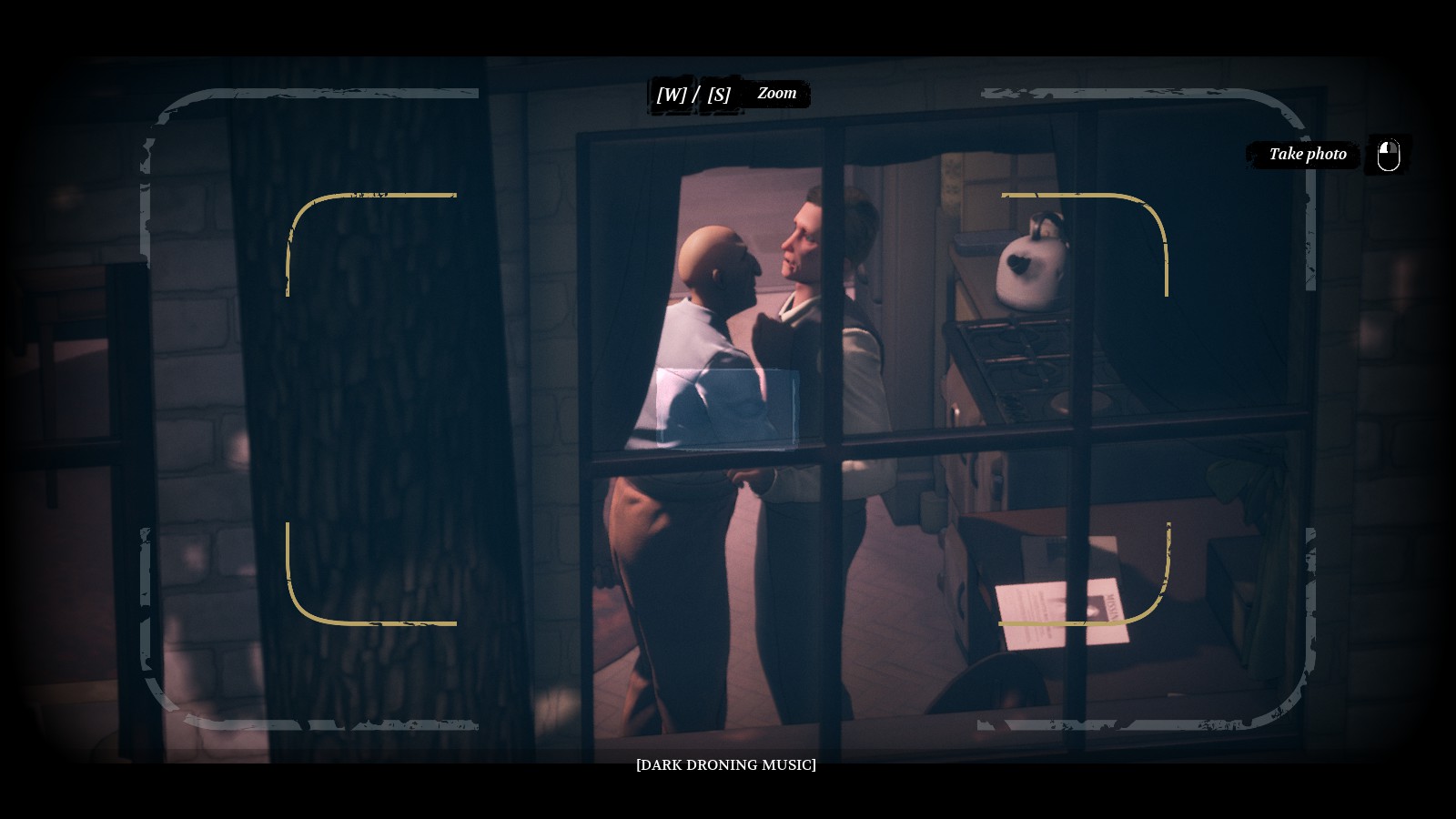
Nobody on Dahlia View draws their curtains
The morning after the kidnapping you spy on your neighbours fighting in front of an open window before cartoonishly disposing of what looks to be a body wrapped in a carpet. It’s just all so farcical. Still, something must be done about the potential horrors of the Smiths next door so once you’ve taken the requisite number of pre-determined photographs, Conway sets out to do some hands-on detective work.
To investigate the world around you Conway must navigate conversations with minimal dialogue trees and solve increasingly high stakes puzzles to find clues. The former are remarkably dry affairs thanks in large part to a script that knows exactly what genre it’s in but can’t find much beyond that, but more on that in a bit. Conway: Disappearance at Dahlia View’s exploration and puzzle design is comparatively more organic, with Conway making his way through believable living spaces naturally finding clues and secrets in places I’d probably hide my own in. Engaging with the world mechanically is often simple enough, with mouse motions and key holding prying open lids and turning keys. You can also pick up and investigate items, zoom in to notice details and so on.
There are a handful of lockpicking minigames, easily the most engaging of the mechanics, which see you navigating a small maze three times over with a limited scope and holding down keys in an awkward fashion. It’s fun and with a fail state would even be quite thrilling, but like most of the puzzle-solving in Conway: Disappearance at Dahlia View, it all passes you by in a very unaffected way. You’ll need to find elaborate ways of navigating a level or find a code for a lock from time to time, but the ways in which you do so remain simple to a fault. It’s not bad design, it does what it means to do, but it doesn’t invoke a sense of discovery either.
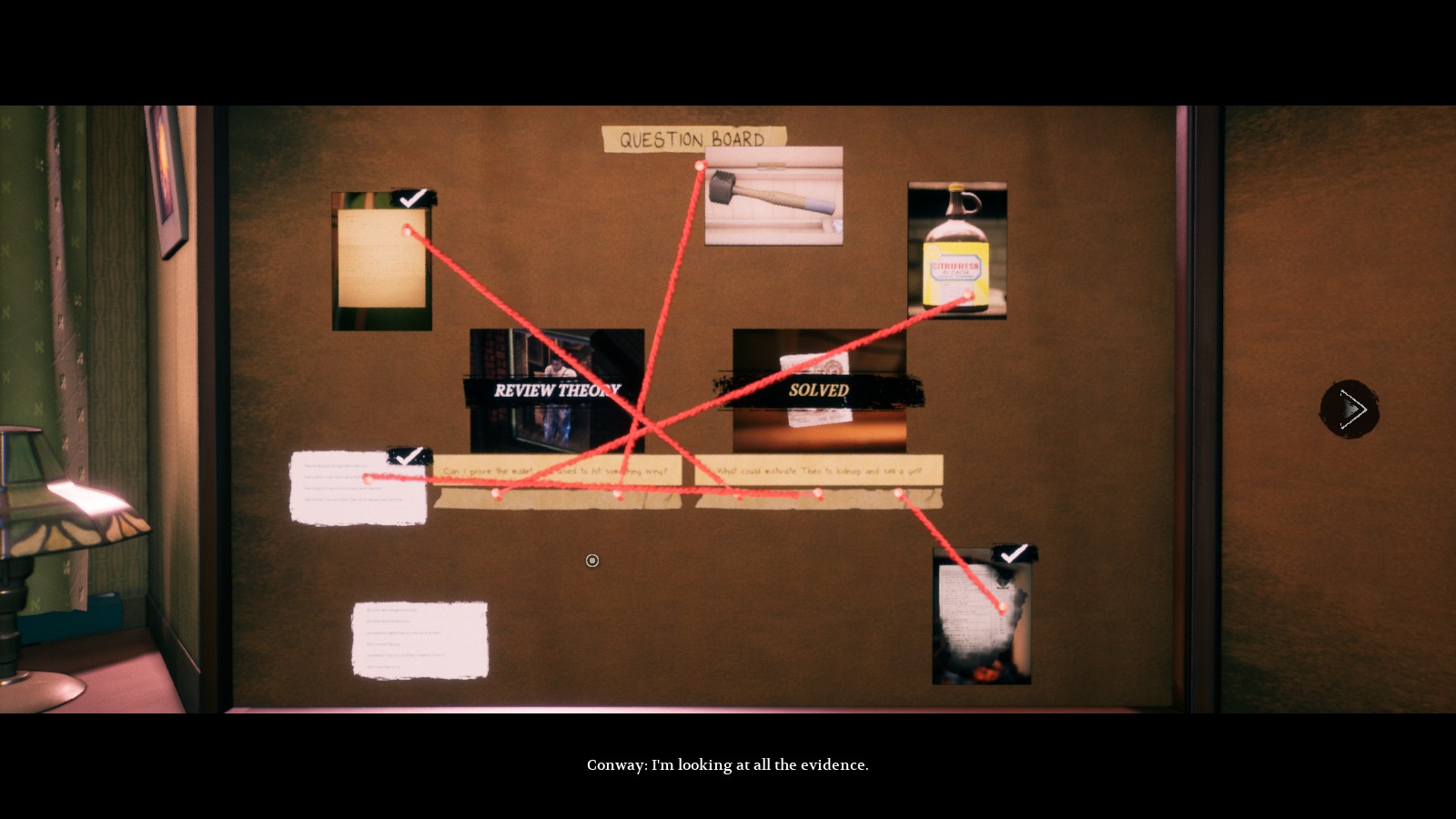
This is as fun as it looks in the movies
Once you’ve gathered your evidence, Conway skulks back to his makeshift investigation room and begins to piece together theories about what he has encountered. To do so you’ll be presented with a lingering question or thought and will need to (literally) draw a line between the hypothesis and the evidence on the pin-up board. It’s fun in an earnest way, the kind of dorky but satisfying mystery-solving that you can only really get from such a trope-laden tale. You can sift through your evidence here, deciding which pieces of it help support your case and which can be discarded. There are predetermined answers of course but provided you’ve thoroughly investigated a scene you’ll have more than enough to chew on when it comes time to solidify your theories.
The conversations Conway engages in strain under the tedium of the overarching narrative. A missing child isn’t an inherently poor catalyst for intrigue, but the game rapidly spins out from there into a perfunctory mystery. The overly suspicious neighbours are all hiding their contractually obligated secrets, some of which help you uncover more about the core mystery, most of which would have been better left as none of your business. You’ll sit with them, you’ll poke and prod at their lives after you’ve exhumed their homes and businesses, then you’ll allow them their indignity without much regard because you’ve got a stranger’s daughter to save, goddamnit.
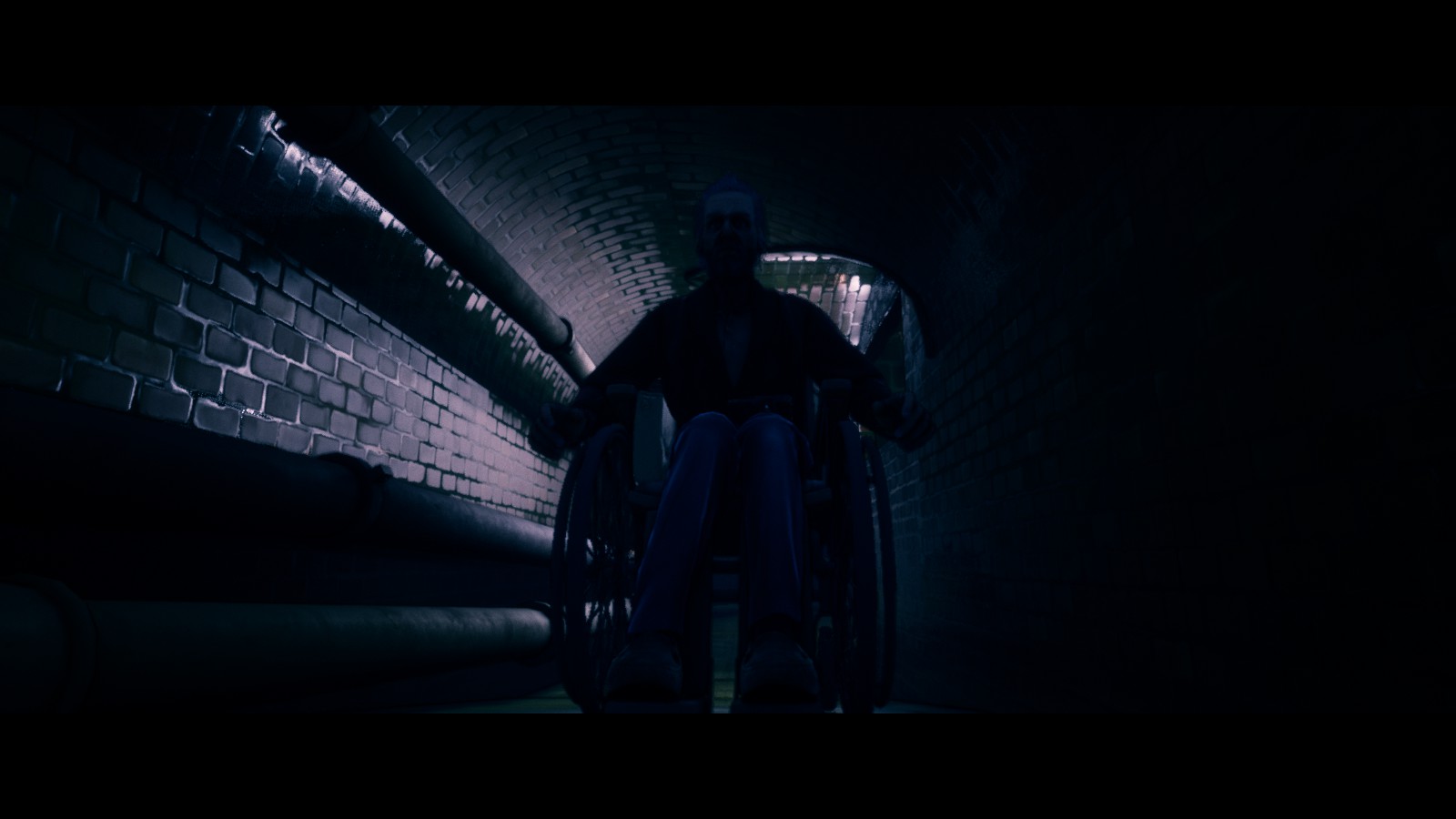
The game’s camera angles are occasionally stunning
There are moments when Conway: Disappearance at Dahlia View shakes off the cobwebs of the genre and becomes something a little more thrilling. Conway’s daughter, played by Ally Murphy, flitters in and out of the story, herself a police officer investigating the kidnapping with her own reservations about her father’s involvement. Ally delivered my favourite performance of the ensemble cast, who all dutifully act out the often limited roles they were given. She manages to say so much with so little here, you can feel how their dynamic is strained under the surface with years of unsaid history coming through in the performances alone. She provided a much-needed rebuke to Conway’s masculinity too, a voice of reason at a time where I felt completely at odds with the protagonist.
The game utilises a TellTale-lite art direction that sits comfortably between animation and realness. The fixed camera angles, which you can toggle between with a menu, offer up some fantastic shots of Conway moving through the world. At its best, it reminded me of the claustrophobic hallways of the Spencer Mansion in Resident Evil with static shots of a dimly lit home, and Conway slinking through it like an unwelcome phantom. Dialogue scenes are mostly reverse shot affairs unfortunately but there is some stylistic licence taken with focus and details. Likewise, the game’s sound design is immaculate and its soundtrack suitably foreboding.
Final Thoughts
Conway: Disappearance at Dahlia View feels like a paperback mystery novel you might find at the back of the bookstore. It’s not exactly a hidden gem but it does contain the occasional glint of something special. Perfunctory writing drags down the tension and a limited range of puzzles and interactivity struggles to pull it all back together. Worse though, Conway’s brutish ways filled me with unease from the first snap of the camera, rather than filling me with the joy of a good detective story, I just felt like an intruder.
Reviewed on PC // Review code supplied by publisher
Click here for more information on WellPlayed’s review policy and ethics
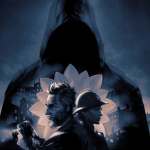
- White Paper Games
- Sold Out
- PS5 / PS4 / Xbox Series X|S / Xbox One / Nintendo Switch / PC
- November 2, 2021



One part pretentious academic and one part goofy dickhead, James is often found defending strange games and frowning at the popular ones, but he's happy to play just about everything in between. An unbridled love for FromSoftware's pantheon, a keen eye for vibes first experiences, and an insistence on the Oxford comma have marked his time in the industry.





